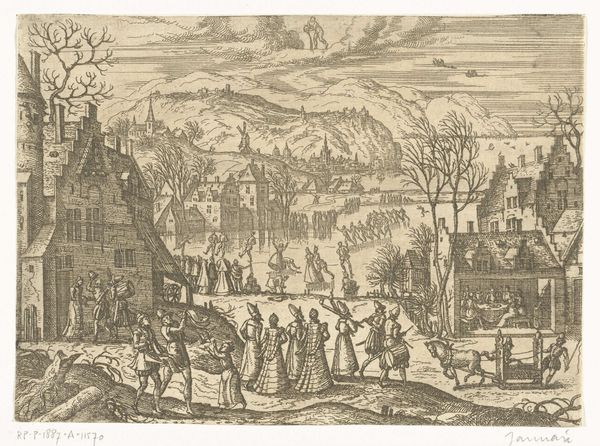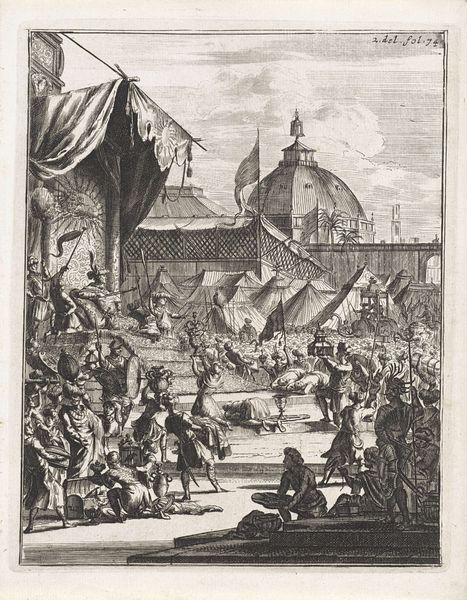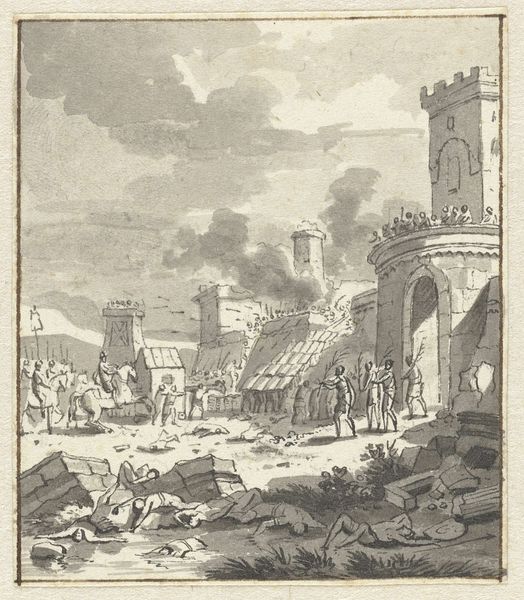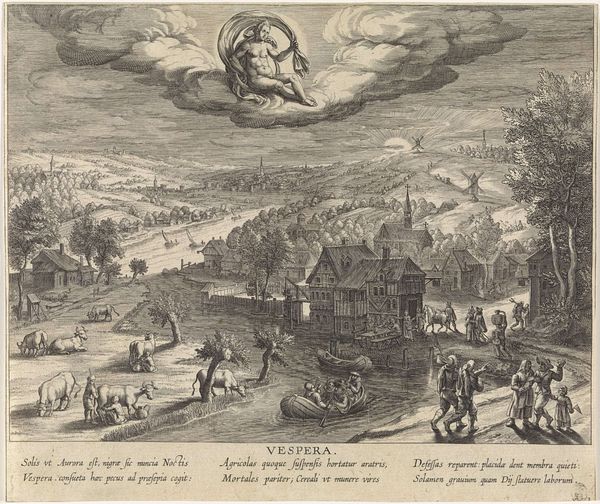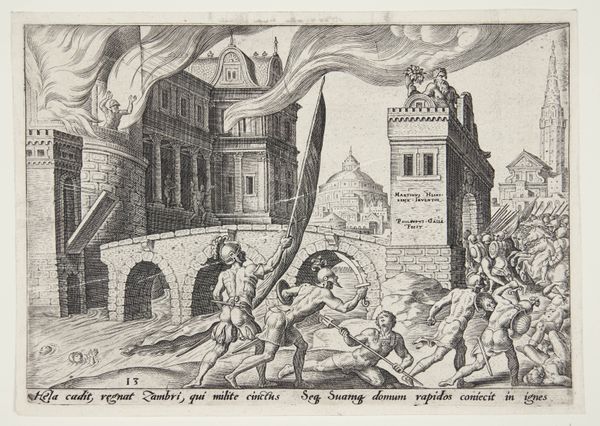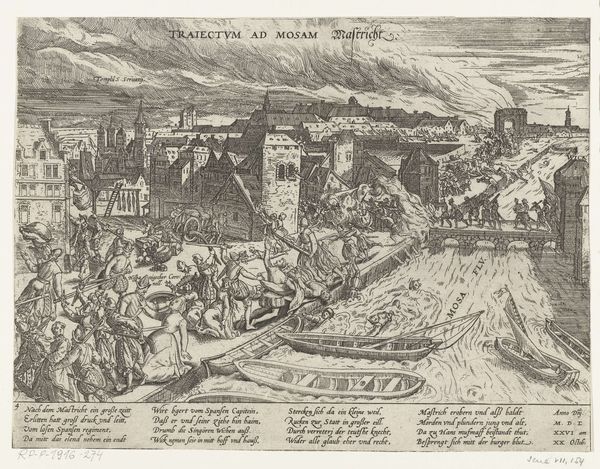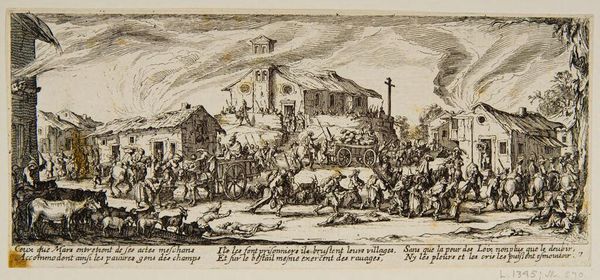
Allegorie op de nacht met personificatie van Nox (de nacht) c. 1590 - 1637
0:00
0:00
egbertvanpanderen
Rijksmuseum
print, engraving
#
allegory
#
baroque
# print
#
old engraving style
#
landscape
#
figuration
#
cityscape
#
history-painting
#
engraving
Dimensions: height 186 mm, width 218 mm
Copyright: Rijks Museum: Open Domain
Editor: This is “Allegorie op de nacht met personificatie van Nox (de nacht),” or “Allegory of the Night with the Personification of Nox (the Night),” an engraving from around 1590-1637, currently housed in the Rijksmuseum. I’m struck by the contrast between the detailed cityscape below and the almost dreamlike figure of Nox floating above. What symbols do you notice? Curator: Immediately, I see how the artist uses light and shadow to evoke a sense of mystery and hidden meanings. The reclining figure of Nox, surrounded by stars, certainly embodies the night. What I find more compelling is how the city below seems both familiar and slightly menacing. The torchlit procession suggests ritual, perhaps even a hidden revelry. Notice how the figures are obscured, their faces hidden—emphasizing the anonymity that night provides. What emotions does that invoke for you? Editor: A bit of unease, definitely. The people feel like they are up to no good. What is the story that those figures are telling? Curator: Night, historically, has been a liminal space – a time when societal rules relax and the subconscious comes to the forefront. Consider the bat-like creatures in the upper portion of the image – creatures of the night, they underscore a sense of unease and perhaps, mischief. This engraving presents an interesting question: does night merely conceal, or does it actively encourage certain behaviors? The cityscape acts as a stage for exploring that idea. Does the landscape alter your perception of the piece? Editor: It makes me wonder where exactly this scene is supposed to be. The ruined architecture gives a sense of history, but is this a real place, or a constructed allegory? Curator: That tension is key, isn’t it? By grounding the allegory in a specific, albeit idealized, place, the artist makes the themes more tangible, and, by extension, more psychologically relevant. Editor: I see it! Looking closer, there’s a lot more to discover beneath the initial impression of a simple night scene. Curator: Precisely. It is a reminder that images are not just representations, but carriers of cultural memory and enduring human concerns.
Comments
No comments
Be the first to comment and join the conversation on the ultimate creative platform.


